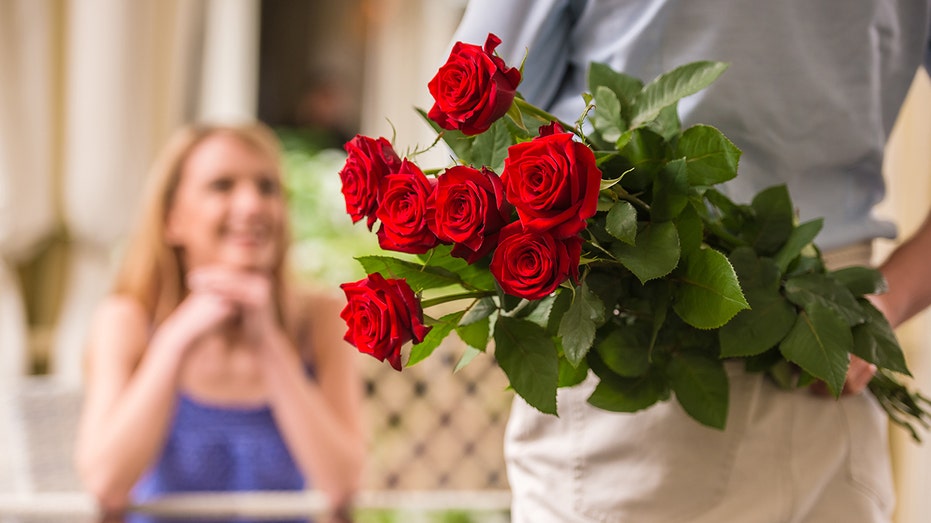Why are roses expensive?
National Red Rose Day: Floral experts share why roses can be pricey
Roses might be considered a symbol of love in most cultures but the flowers can also cost a pretty penny, especially when they are compared to other plant types.
FLORISTS FACE MOTHER'S DAY CORONAVIRUS QUARANTINE CHALLENGES
FOX Business spoke with three floral experts to get their insight on why roses are an expensive type to buy and how the industry operates behind the scenes.
Supply and demand

A young woman looking at a man who has a rose bouquet behind his back. (iStock).
“Part of the cost of roses can be explained by supply and demand," said Dan Bailey, the president of WikiLawn, a lawn care pro network and resource. "There will never be a lack of demand for roses, but there often isn't enough supply to keep up. This skyrockets the price, especially in February and during other major holidays where roses are a focus.”
PRESERVED ROSES, A NEW VALENTINE'S DAY FAVORITE, LAST UP TO A YEAR
“Additionally, there's a standard of beauty for roses that other plants aren't held to as rigidly,” he said, offering another reason why roses tend to cost more than other flowers.
Roses are high maintenance

Florists working in a flower shop making rose bouquets. (iStock)
The price of roses tends to be higher because the floral industry is more elaborate than most consumers realize, said Marie Danielle Vil-Young, the founder and creative director at À Votre Service Events, a luxury floral design and special event planning company.
CHRISTIAN FLORIST COULD LOSE EVERYTHING IF SUPREME COURT DOESN'T WEIGH IN, LAWYER SAYS
A majority of flowers used in the U.S. are imported from other parts of the world. The roses that make it stateside mainly come from Latin American countries that are close to the equator, such as Ecuador and Colombia.
“These roses have to make their way to the U.S. via air cargo in many cases, upon arrival, there are customs, taxes, transport and distribution throughout the U.S.,” Vil-Young explained. “Much of the flowers will arrive in Miami, which is a main hub for import-export. The flowers will then travel to different parts of the country via refrigerated trucks.” “This whole process is costly — from breeding to pre-harvest and post-harvest processing that happens at the farm level, travel to the U.S., distribution from wholesalers throughout the U.S. to florists, then to the end-user, the charges only accumulate at each step,” she added. “Once a florist has the flowers, there is a huge labor component that most people are not aware of. There is the upkeep, cleaning and processing of the flowers, cost of cooling, water and electric bills, etc.”
READ MORE ON FOX BUSINESS BY CLICKING HERE
There are additional costs in maintaining roses, including materials such as ribbons, tape, vases or an oasis. Design labor and potential transportation for arrangements are other fees that may be factored in as well.
The market favors consistency

Rose bouquets are prepared to be exported overseas ahead of Valentine's Day at a farm in Facatativa, Colombia, Feb. 1, 2017. (REUTERS/Jaime Saldarriaga)
"Combine these economic and logistical factors with a holiday that continues to push roses as the ultimate romantic gift, and it's the perfect storm for high prices,” said Derek Gaughan, the owner of lawn resource Prince Gardening.
He added: “Many florists keep the prices of roses marked high year-round to avoid any backlash for increasing prices around Valentine's Day.”




















